Mark Wallinger and Studio Octopi installation celebrates the Magna Carta
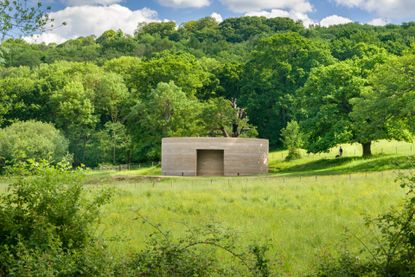
As one walks across the green countryside towards Cooper’s Hill in Runnymede, a low, circular building emerges from the base of the rolling hills of Surrey. This is the new permanent installation by Turner Prize-winning artist Mark Wallinger, produced in collaboration with London-based architects Studio Octopi, as a celebration of the Magna Carta – the seminal document sealed by King John over 800 years ago on the land that is now cared for by the National Trust. The art piece, entitled ‘Writ In Water’, was named after the inscription on poet John Keats’ gravestone.
The structure was inspired specifically by the Magna Carta’s famous Clause 39 – ‘No free man shall be seized or imprisoned, or stripped of his rights or possessions, or outlawed or exiled, or deprived of his standing in any way, nor will we proceed with force against him, or send others to do so, except by the lawful judgment of his equals or by the law of the land,’ – that is widely considered a landmark moment in shaping common law and modern justice and democracy across the world.
With the initial commission won, Wallinger approached Studio Octopi, who he knew through their design of the Delfina Foundation, where he is a trustee. ‘We were keen to establish a narrative that linked the architecture with Mark’s concept. It was agreed that the building’s materials should be drawn from the context, that the form should physically embed itself in the landscape and that encoded within the design would be references to the passage of time’, says James Lowe of Studio Octopi.
The team responded to this by creating a round, low and symmetrical structure that is open at its heart – a central oculus masterfully unites the sky and a reflective pool on the ground, bringing together air, water and light in perfect harmony. Wallinger and Studio Octopi wanted to ‘provide visitors with a space for reflection and contemplation’, they explain. The structure is a simple circular labyrinth made of rammed stone from the site; this references the local geology of the ancient site. The roof structure consists of 52 stained Douglas Fir rafters.
The inside of the round pool is carved with the words of Clause 39. ‘In Writ in Water, the use of reflection to make the text legible plays against the idea of a law written in stone. Magna Carta curtailed this divine right and issued the first secular writ’, says Wallinger.
‘In working through each of these details Studio Octopi’s aim was to best represent the concept within the historic landscape, choosing materials and details that reinforced Mark’s concept. Our work is predominantly involved with existing structures and establishing a narrative between host and insertion. Our approach was very similar here…’ concludes Lowe.
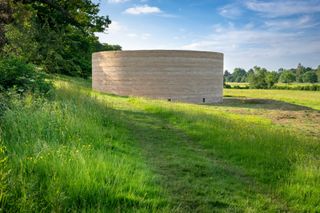
The permanent installation celebrates the legacy of the Magna Carta.
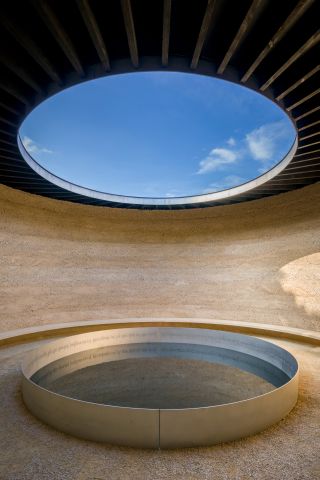
Entitled 'Writ In Water', the piece is an immersive space for contemplation.

At its heart, an oculus unites water, sky and light in perfect synergy.
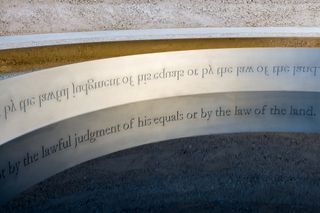
The sides of the pool are inscribed with Clause 39 of the Magna Carta.
INFORMATION
For more information visit the website of Studio Octopi
Wallpaper* Newsletter
Receive our daily digest of inspiration, escapism and design stories from around the world direct to your inbox
Ellie Stathaki is the Architecture & Environment Director at Wallpaper*. She trained as an architect at the Aristotle University of Thessaloniki in Greece and studied architectural history at the Bartlett in London. Now an established journalist, she has been a member of the Wallpaper* team since 2006, visiting buildings across the globe and interviewing leading architects such as Tadao Ando and Rem Koolhaas. Ellie has also taken part in judging panels, moderated events, curated shows and contributed in books, such as The Contemporary House (Thames & Hudson, 2018), Glenn Sestig Architecture Diary (2020) and House London (2022).
-
 Serenade your senses at Farasha Farmhouse in Marrakech
Serenade your senses at Farasha Farmhouse in MarrakechFarasha Farmhouse is a serene escape hidden on the outer reaches of Marrakech
By Nicola Chilton Published
-
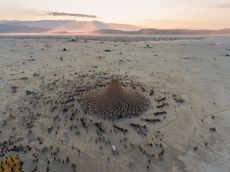 ‘Bio-spaces’ exhibition at Roca London Gallery celebrates biophilic design
‘Bio-spaces’ exhibition at Roca London Gallery celebrates biophilic design‘Bio-Spaces: regenerative, resilient futures’ opens at the Roca London Gallery as ‘a call to action to stop designing nature out’
By Clare Dowdy Published
-
 Les Lalanne’s surreal world takes over Venice
Les Lalanne’s surreal world takes over Venice‘Planète Lalanne’, presented by Ben Brown Fine Arts, takes over Palazzo Rota Ivancich, with a cast of blue hippos, woolly sheep and giant grasshoppers
By Hannah Silver Published
-
 ‘Bio-spaces’ exhibition at Roca London Gallery celebrates biophilic design
‘Bio-spaces’ exhibition at Roca London Gallery celebrates biophilic design‘Bio-Spaces: regenerative, resilient futures’ opens at the Roca London Gallery as ‘a call to action to stop designing nature out’
By Clare Dowdy Published
-
 Don’t Move, Improve 2024: London’s bold, bright and boutique home renovations
Don’t Move, Improve 2024: London’s bold, bright and boutique home renovationsDon’t Move, Improve 2024 reveals its shortlist, with 16 home designs competing for the top spot, to be announced in May
By Ellie Stathaki Published
-
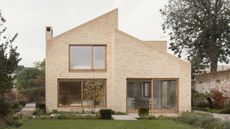 Timber-framed Wimbledon house is a minimalist, low-energy affair
Timber-framed Wimbledon house is a minimalist, low-energy affairA new timber-framed Wimbledon house is designed to blend into its traditional surroundings with a neat brick façade, careful massing and pared back interiors
By Jonathan Bell Published
-
 London Science Museum’s Energy Revolution gallery champions sustainable exhibition design
London Science Museum’s Energy Revolution gallery champions sustainable exhibition designThe Energy Revolution gallery opens at London’s Science Museum, exploring decarbonisation through sustainable exhibition design by Unknown Works
By Ellie Stathaki Published
-
 This South Downs house stands as a testament to the value of quiet refinement
This South Downs house stands as a testament to the value of quiet refinementAt one with the landscape, a South Downs house uses elements of quintessential country villas and midcentury gems with modern technologies
By Jonathan Bell Published
-
 Ash Tree House offers a contextual approach to a north London site
Ash Tree House offers a contextual approach to a north London siteAsh Tree House by Edgley Design is a modern family home in a north London conservation area's backyard site
By Ellie Stathaki Published
-
 In memoriam: John Miller (1930-2024)
In memoriam: John Miller (1930-2024)We remember John Miller, an accomplished British architect and educator who advocated a quiet but rigorous modernism
By Jonathan Bell Published
-
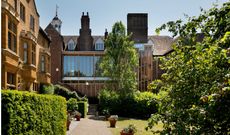 River Wing at Clare College responds to its historic Cambridge heritage
River Wing at Clare College responds to its historic Cambridge heritageUniversity of Cambridge opens its new River Wing on Clare College Old Court, uniting modern technology with historic design
By Clare Dowdy Published